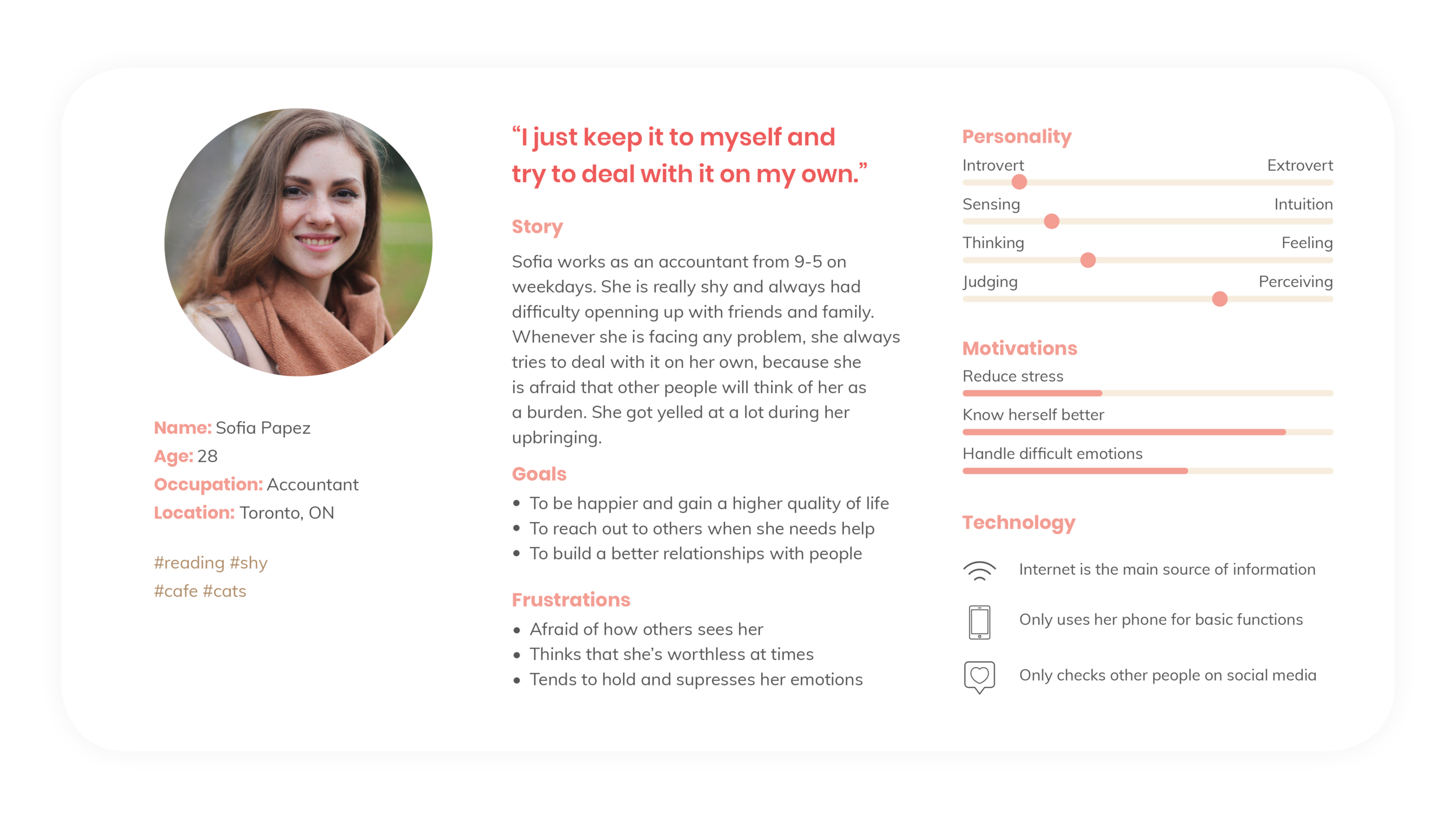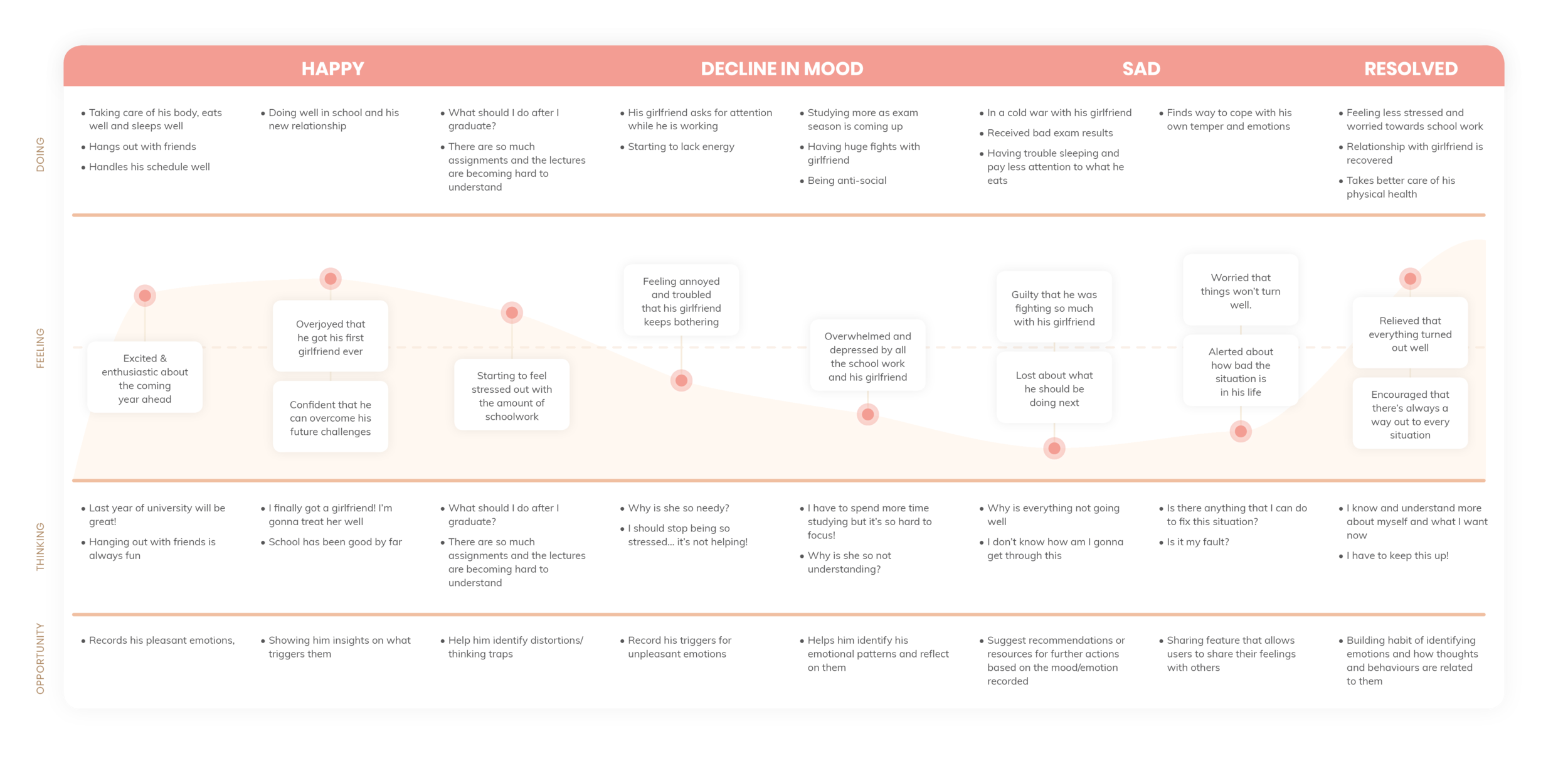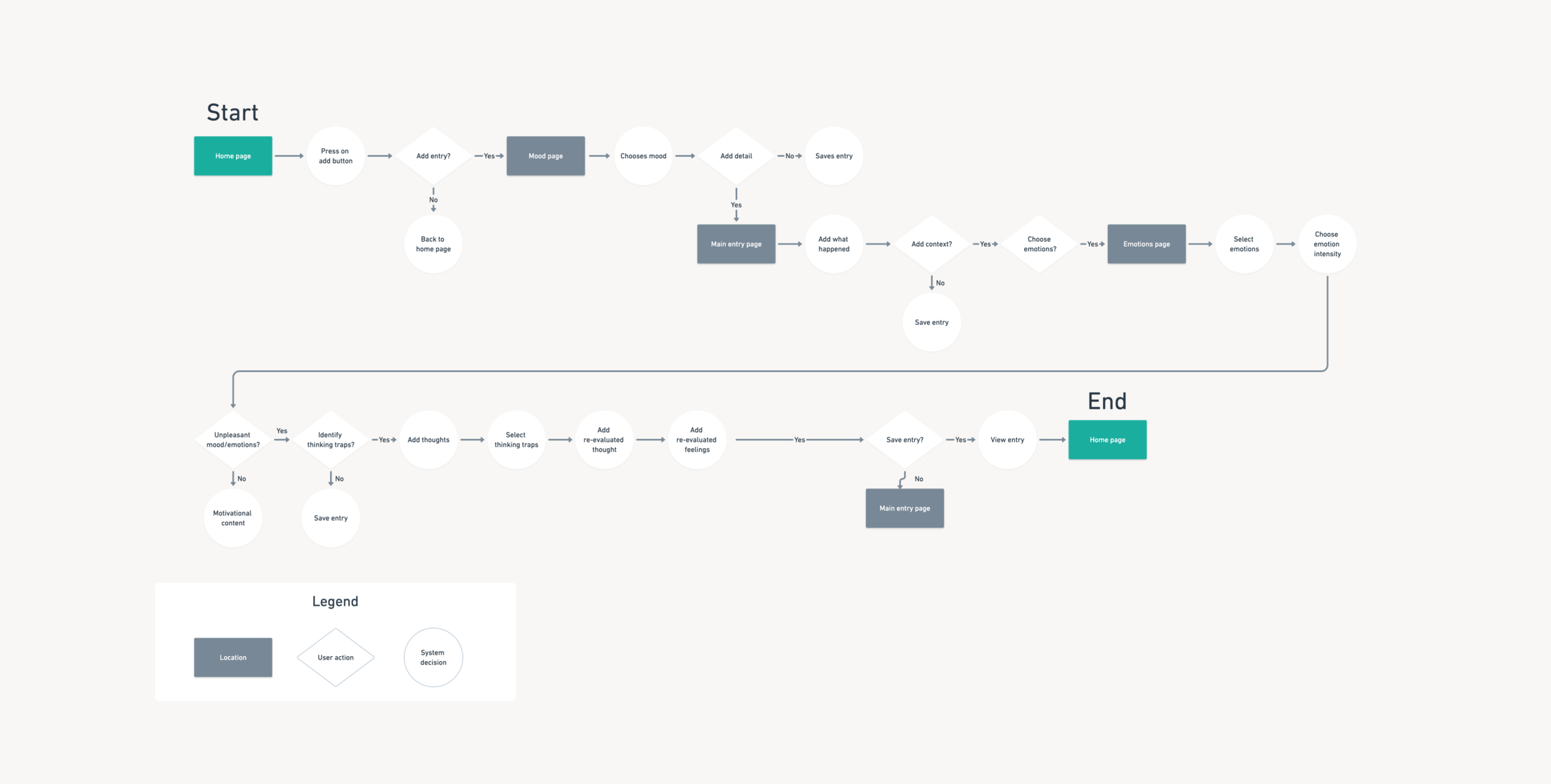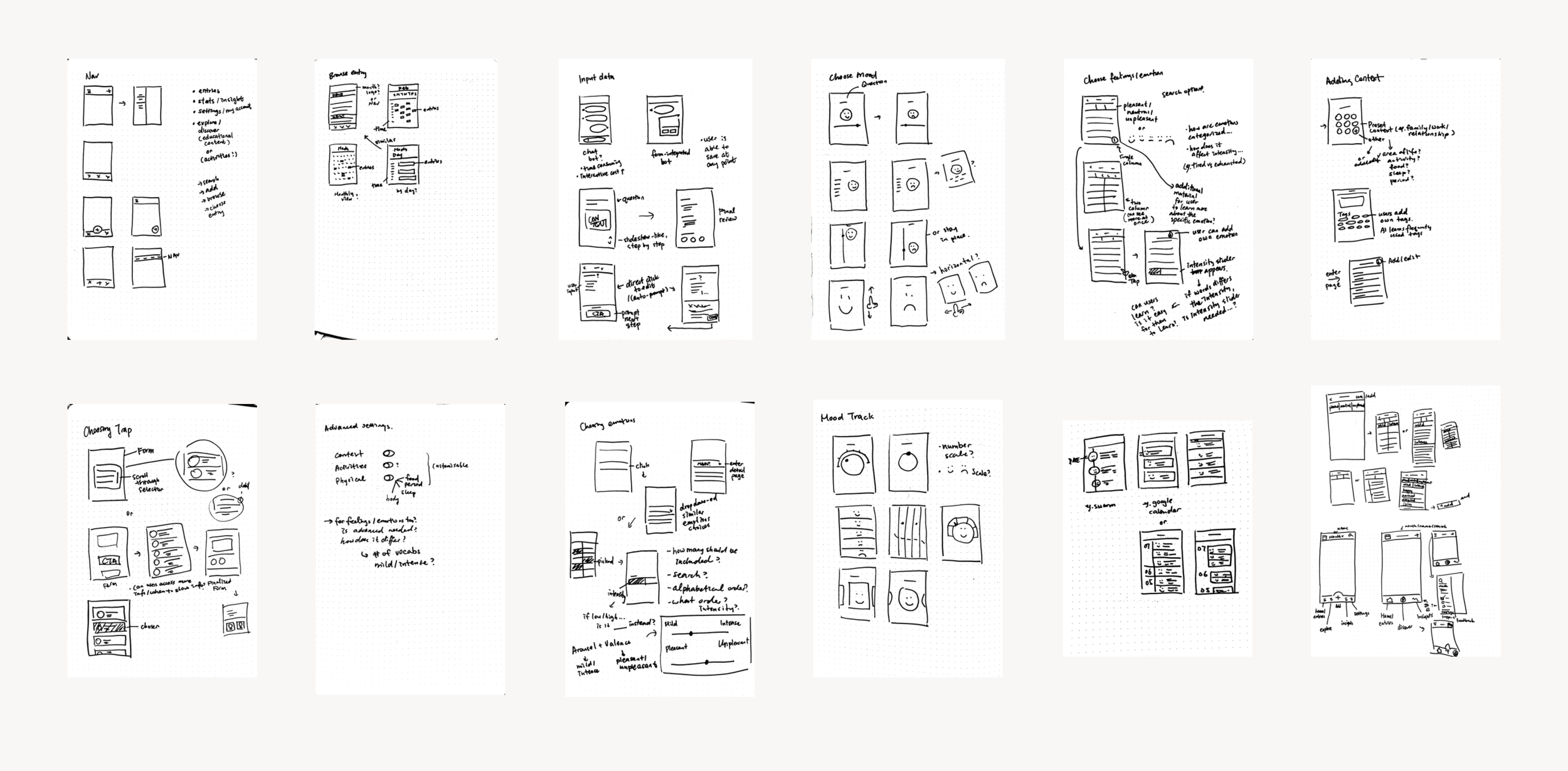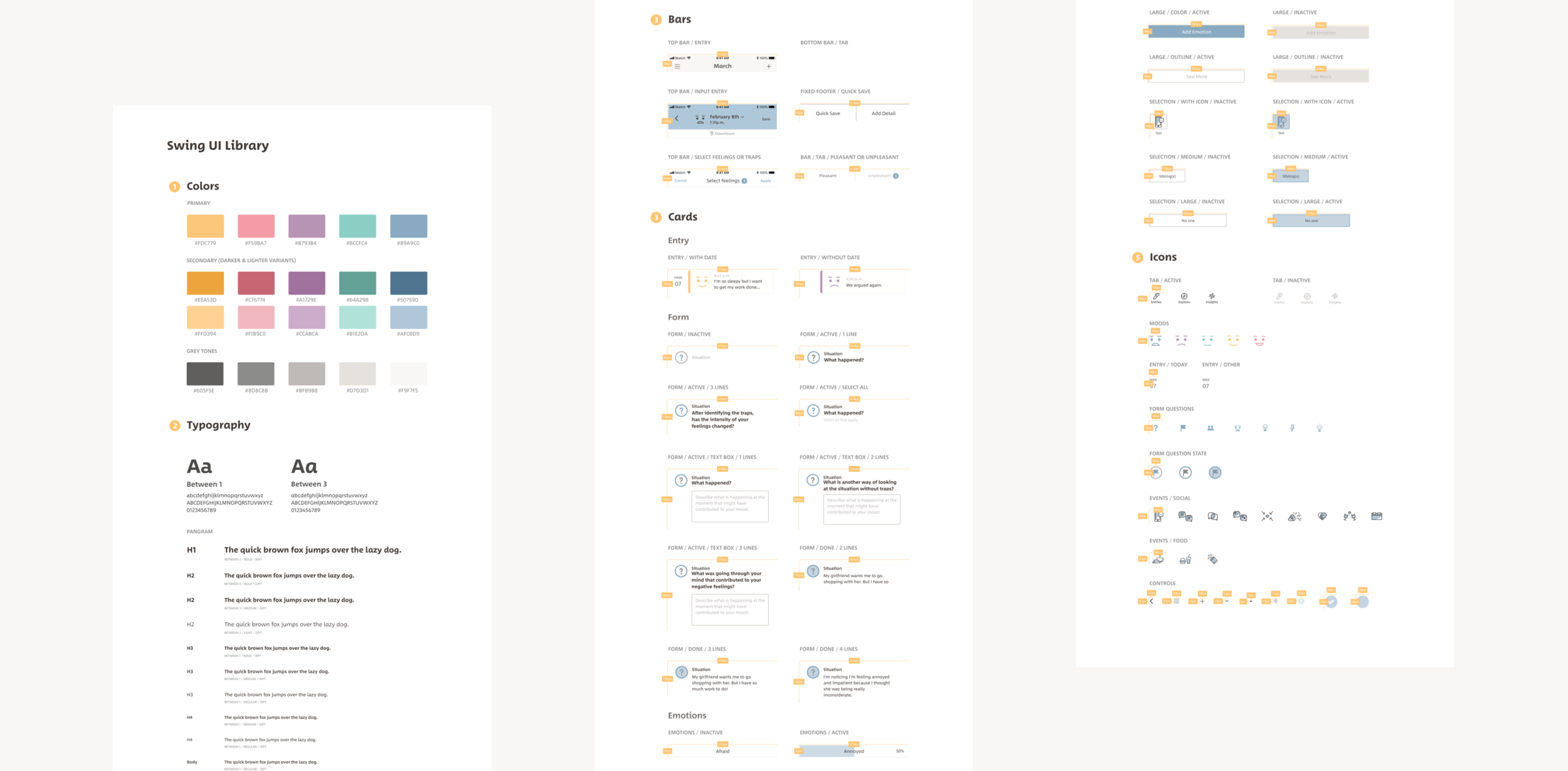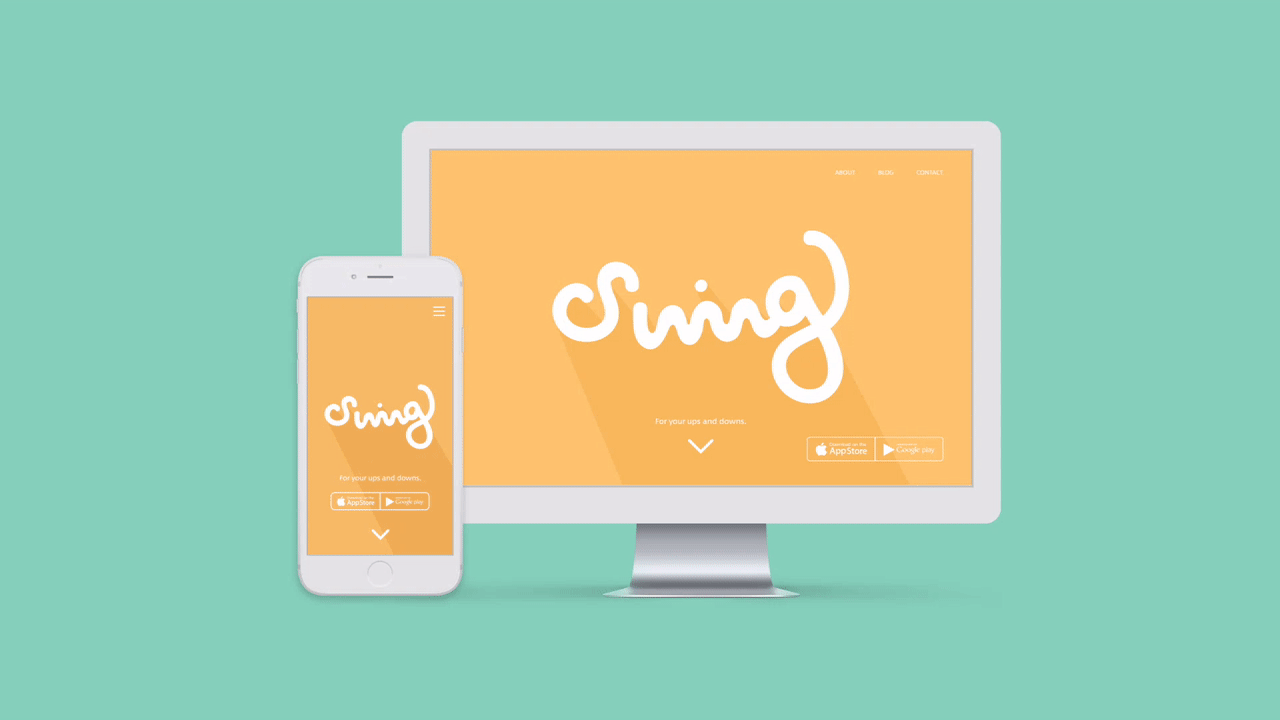Swing
#MentalHealth #EmotionalAgility #MoodTracking #QuantifiedSelf
Role
UX/UI Design
Product Design
Branding
Type
IOS Device
10 weeks
Summary
Swing is a guide to health and happiness. Learn to regulate emotions by tracking ups and downs, developing healthy thinking habits, and gaining perspectives associated with emotional well-being.
Problem Space
Emotions serve vital functions in our lives, influencing our thoughts, feelings and behaviours. Problems emerges when people avoid their emotions frequently. Our thoughts, feelings and behaviours can interact and influence each other to create a vicious cycle.
How might we help people identify, understand and handle their emotions in order to improve mental well-being?
Project Goals
1 . Tool
To serve as a preventive health and healthcare tool.
2 . Awareness
Improving people’s emotional awareness, which also help with the recognition of mental health issues.
3 . Accessibility
Serve as a more accessible and affordable option comparing to traditional methods.
4 . Education
Educate people on emotion and mental health related topics.
5 . Stigma
Reduce stigma surrounding mental health topics.
Research
Methods
Interviews
Surveys
Secondary Research
Experience Mapping
Persona
Usability Testing
Secondary Research Findings
Negative emotions
Instead of labelling it as negative, unpleasant emotions are simply natural emotions that are informative.
Emotional literacy
Showing up and applying words to emotions is tremendously helpful to being more emotionally aware.
Cognitive behavioural therapy
A psychotherapy treatment to change patterns of thinking or behaviour in order to change the way people feel.
Mood Tracking
Studies have shown that by mood tracking, raised emotional awareness reduced the persistence of bad habits and improved goals pursuit.
Personas
With research learnings from interviews and surveys conducted, two personas that embodied the archetypes of the target audience are made. Three main pain points that people have regarding to their emotions are:
Lack of knowledge and methods.
Negative feelings are harder to go through when not acknowledged.
Self-reliance as the most common barrier.
Experience Map
A journey map of the primary persona Samuel is created to visualise his areas of frustrations and create a focal point on the problem space.
Task Flow
Through creating and organising user stories, a core task is chosen. In order to track the user’s mood to discover trigger or patterns and gain insights based on the information, users have to first input data. Therefore, adding a mood entry has been selected as the core task.
Sketching
Sketches are drawn to explore different layout possibilities, which will then be digitised with Sketch and prototyped with InVision.
Prototyping
First round of prototype is created from the chosen sketches, and is tested by five users that matches the target demographic.
Iterations
After the first round of user testing, it could be noticed that users were frustrated by the seemingly long process because of the lack of a clear visibility of how many steps they have to go through, as well as a lack of clear action for the next steps, so those were the two areas the iteration effort was focused on.
Visual Identity
A list of brand adjectives are generated for visual identity and brand values.
Accessible
Inclusive
Accepting
Soothing
Compassionate
Considerate
Understanding
Reliable
Friendly
Encouraging
Playful
Approachable
Brand Colors
A broad range of colours
A range of colours are chosen to represent the range of emotions that we as human are able to feel. While it is playful, a soft colour palette introduces a soothing and calming effect, which makes the brand more approachable. Warmer tones of grey are included to communicate warmth.
PRimary Colour
Orange is chosen to be the brand colour out of the range of colours because it communicates the meaning of joy, warmth, encouragement and fun. Orange promotes a sense of general wellness and emotional energy that should be shared, such as compassion, passion, and warmth.
Brand Name
Swing comes from mood swing, which usually carries a negative notion. However, it also represents the ups and downs of emotions, which is what the app is intended to record. The word Swing, excluding “mood,” is usually connected with swings in the playground, which is fun! It promotes the idea that having ups and downs are normal and instead we should be excited and feel fun to engage and learn about all our emotions.
High Fidelity Prototype
After the second round of user testing, frustration of unknown length of process out of the five user testing is successfully eliminated. The low fidelity prototype is then translated to a high fidelity prototype.
UI Library
Alongside the finished interface designs, an UI library is built to document all elements to keep the designs as consistent and re-usable as possible.
Marketing Website
A responsive marketing website is made to introduce the basic functions and features of the application.
Alternate Platform
The Apple Watch is chosen as the alternate platform to provide convenience and ease for mood tracking. User will be able to quickly create a mood entry.
Design Impact
Engage with emotional world
Swing encourages users to engage with their emotional world, to gain knowledge related to emotions as well as drawing insights about their own emotions on their own.
Convenient tool
Swing makes mood tracking, analysing and understanding the tracked data an easier daily task compared to using papers or notebook.
Future Thinking
What happens when 100 million people use your product?
If 80% of the population is using the product, actively and engaged, people would be more aware of their feelings, what they think and how they react to situations. People will learn more about themselves, and they're also able to sense the emotional needs of others. I believe it would transform the way people interact with others and they will be more compassionate with people around them.








